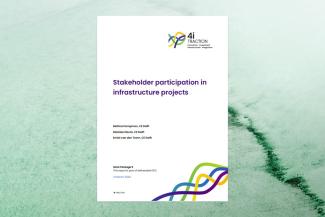
Kampman, B., Nauta, M., van den Toorn, E. (2024): Stakeholder participation in infrastructure projects. CE Delft; Delft.
Stakeholder participation in infrastructure projects
This case study explores the theme of participation as a function of procedural governance in energy infrastructure projects.
The transition towards a climate-neutral energy system by 2050 entails a significant restructuring of the current energy infrastructure network. Adaptations with regard to the existing power grid are needed to facilitate and support an increase in electrification, a changing supply-demand profile and the growth of renewable energy production (mainly wind and solar). In addition, new networks for the transport of green hydrogen and CO2 need to be developed. The impact of this infrastructure on the living environment is diverse but can be substantial on a local level. The main issues that may create resistance to infrastructure projects are impacts on the landscape and skyline and property issues.
Participation in policy making is an important way of engaging the general public or directly affected stakeholders. Participation can take place at three levels: one-way informing, two-way consulting and two-way empowerment. There is a firm basis for dissemination of information and consultations in relation to key EU legislation on infrastructure. Two-way empowerment, which is most complex to implement, is also the least well embedded in the existing policy framework.
Participation can increase the legitimacy of the process and decision-making and it can improve policy by allowing the integration of public or stakeholder-specific interests. Stakeholders can be included in the decision-making process from an early stage to optimize the balance between local and national/EU interest. Participation can also raise awareness and political engagement and therefore contribute to a higher level of democratic participation.
EU legislation and customary provisions form a framework to implement participation initiatives, the legislation sets a minimum threshold. The success of a participation procedure is furthermore made up of elements like transparency, full information, recognition of (sometimes subjective) concerns, level of empowerment by stakeholders and in some cases financial compensation.
Participation in infrastructure development is and remains an important asset in procedural governance. It creates a procedure that can accommodate and balance the interests of the project overall and of the affected stakeholders. Flexibility is required to accommodate the diverging aspects related to the local context and the difference in infrastructural projects. Shaping and optimizing the conditions for participation procedures with respect for the diversity of the local context and difference among infrastructure projects, may enhance the quality and consistency of stakeholder participation in infrastructure projects.